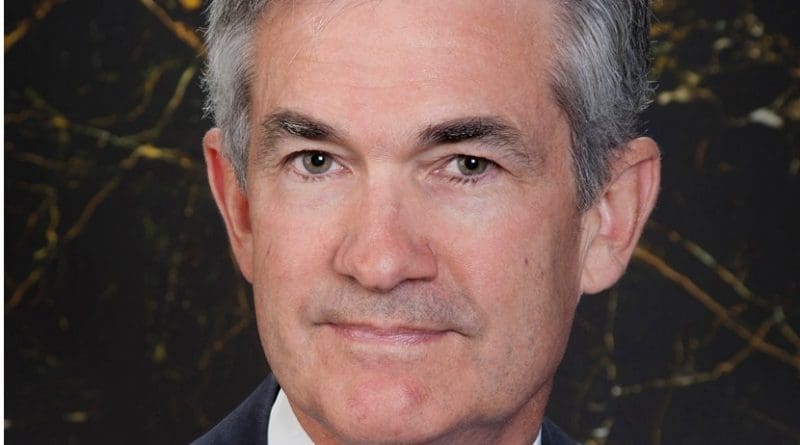Market Volatility Triggered By Fed’s Surprise Balance Sheet Drop – OpEd
By Andrew Moran*
For the last three months, U.S. central bankers have submerged themselves in the vaults of the Eccles Building and printed Federal Reserve Notes like bootleggers’ cheap hooch during Prohibition. The Fed has been aggressively expanding its unprecedented eternal quantitative easing putsch, but something strange happened on the way to the printing press repair shop: The balance sheet unexpectedly decreased. In regular times, this would not be a trend that requires analysis. However, the dip in the balance sheet coincided with the return of volatility that crippled financial markets for the first time since March. Has the Austrian School of Economics been vindicated again?
The Big Swerve
As Liberty Nation recently reported, the Fed’s balance sheet has exploded by trillions of dollars in just a few months. The consensus is that it will exceed $10 trillion by the year’s end as it accumulates more assets. In an exciting turn of events, that balance sheet witnessed its first decline since the end of February, which was also the sharpest shrinkage since May 2009.
Is the Fed tapering its quarantative easing efforts? Nope. The Fed has added more than $100 billion in Treasurys and mortgage-backed securities (MBS). Instead, the contraction was sparked by two events: an $88 billion decline in outstanding repurchasing agreements and a $92 billion drop in liquidity swaps.
Since September, the Fed has been preventing the grim repo from casting its dark shadow over Wall Street. This is a short-term lending market that involves financial institutions borrowing cash from each other to meet the central bank’s reserve requirements. The Fed has been pumping hundreds of billions of dollars into repo markets for the last nine months, stabilizing the volatility.
For the last two months, the Fed has been working with major central banks, such as the Bank of England (BoE), the European Central Bank (ECB), and the Bank of Japan (BoJ), in dollar swaps. The initiative was designed to improve liquidity conditions for the greenback in foreign markets during market crises. Several central banks, in consultation with the Fed, agreed to reduce the frequency of dollar swaps.
This all matters because the stock market has been closely following the balance sheet since the market meltdown in March. The primary factor in the rebound in equities has been the Fed’s money-printing blitzkrieg that flooded the financial arena with liquidity and stopped the hemorrhaging. But the massive swings have seemingly returned to The Street.
Save Us!
Since June 10, the stock market has been as temperamental as a teenager with a bad attitude. One day, the Dow Jones Industrial Average is down 1,000 points, but then the index rebounds 600 points in the next session. Or, within four hours, the Dow can climb 400 points and then finish down 400 points. The Nasdaq Composite Index enjoys an all-time high, but then it reverses the momentum.
The Fed could not stomach a 10% drop in the stock market, so Chair Jerome Powell announced that the central bank would start purchasing individual corporate bonds, in addition to the exchange-traded funds (ETFs). This temporarily calmed the markets, but it was not enough to sustain the bubble.
Powell has signaled that he is ready to unleash additional policy tools to support the economy, also urging Congress to maintain its fiscal relief and stimulus packages. Ultimately, Powell will need to concoct another whatever it takes mechanism to keep the stock market reclaiming its gains from the blood bath earlier this year. Perhaps he should use the final weapons in his arsenal if he is desperate to salvage a dire situation: acquire all the stocks and introduce subzero interest rates. If QE4ever is not enough to keep this market expanding for years to come, then what could?
Taper, Tighten, And Trade
In his semi-annual testimony to Congress, Powell stated that the Fed’s emergency powers would be put away “when this crisis is behind us.” Even if he is sincere in this promise, the fragility of the market and desperation of the political powers would never allow it to happen. The stock market needs its regular fix of cheap money. Otherwise, the leading indexes will crater as they have done in recent sessions. The Fed did not even tighten its balance sheet on purpose, and stocks plummeted. Should the Fed officially taper QE by the time Barron Trump becomes president and remove the training wheels gradually, there will be a significant correction. It will be worse than what the Wall Street bros saw in March. The permanent policy is money printer go brrr. It is the only way the New York Stock Exchange can survive.
*About the author: Economics Correspondent at LibertyNation.com. Andrew has written extensively on economics, business, and political subjects for the last decade. He also writes about economics at Economic Collapse News and commodities at EarnForex.com. He is the author of “The War on Cash.” You can learn more at AndrewMoran.net.
Source: This article was published by Liberty Nation

